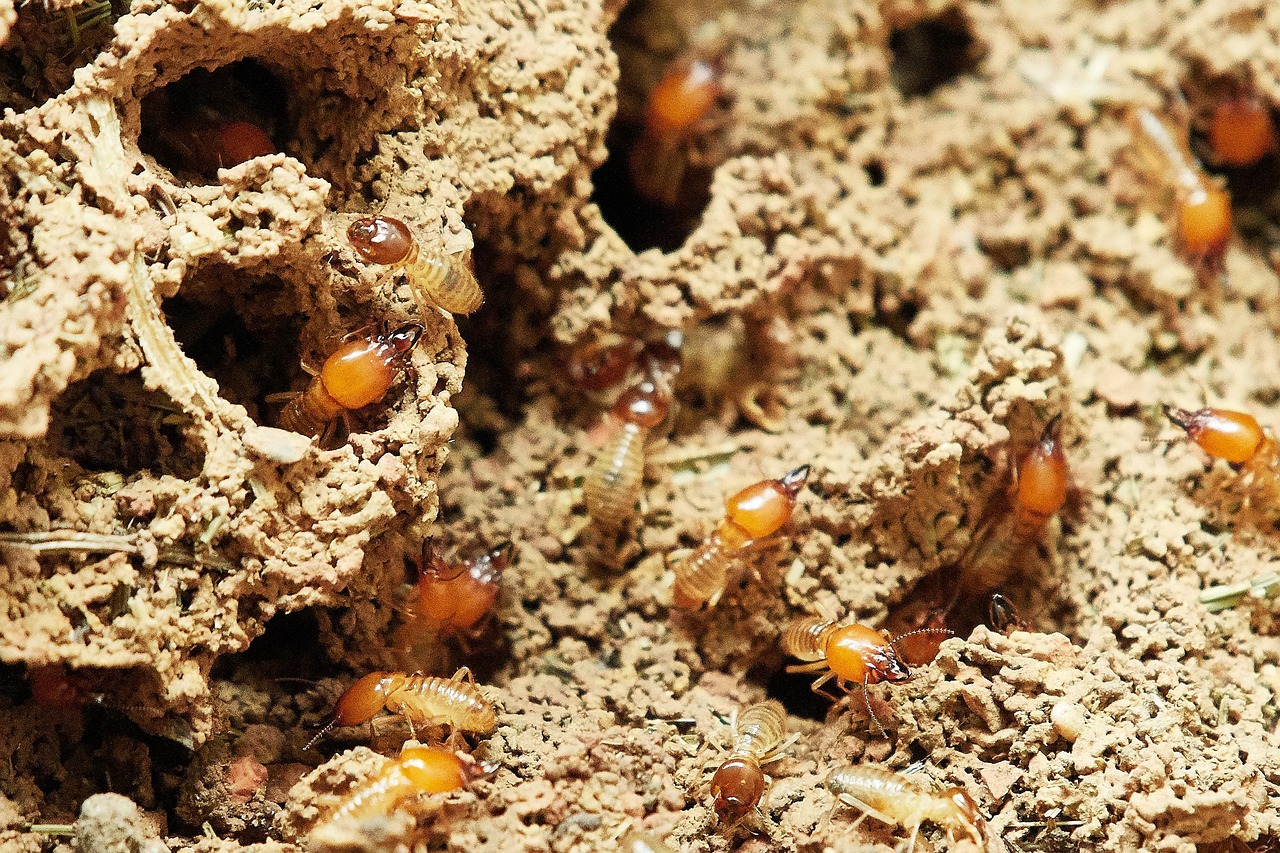Termites are among the most destructive pests homeowners can face, quietly damaging wood structures from the inside out. Spotting signs of a termite problem often triggers a rush to fix it quickly, and for many, that means trying DIY termite treatments found online or at the hardware store. While these solutions may promise fast results, they often come with hidden risks that can make the problem worse. Understanding the limitations of DIY methods and the potential dangers they pose is crucial for effective and long-lasting termite control.
The Complexity of Termite Colonies
One of the biggest misconceptions about termites is that they can be eliminated with surface treatments or spot fixes. In reality, termite colonies are intricate systems consisting of workers, soldiers, and reproductive members spread over a large area. What you see on the surface, like frass, mud tubes, or damaged wood, is only a fraction of the full infestation.
DIY treatments often fail to account for:
- Hidden nests and tunnels: Colonies can extend deep underground or behind walls, far beyond visible activity.
- Multiple entry points: Termites exploit various cracks in slabs, foundations, or siding to gain access.
- Reproductive swarms: If not addressed, swarming termites can form new colonies quickly.
- Colony size and structure: Subterranean termite colonies can number in the hundreds of thousands.
This complexity means that treating just one area, or applying chemicals without understanding colony behavior, may only address a small portion of the infestation.
Incomplete Treatment Allows Termites to Spread
One of the most serious dangers of DIY termite treatment is that it often leads to partial elimination, allowing the colony to survive and spread. Many over-the-counter sprays or foggers kill only the termites that are directly exposed. The vast majority remain active, continuing to damage wood behind the scenes.
If left untreated or improperly managed, colonies can expand quickly into new areas of the structure. According to this resource on how fast termite infestations spread, a single colony can cause significant damage within months. Without complete eradication, a small issue can turn into a structural crisis, requiring costly repairs.
Other consequences of incomplete treatment include:
- False confidence: Visible termites may disappear temporarily, giving a false sense of success.
- Secondary infestations: Disturbed colonies may split, creating satellite nests.
- Worsened damage: Undetected activity can continue for years in crawlspaces or structural beams.
In short, delaying or inadequately addressing a termite infestation with DIY methods puts your property at serious risk.
Health and Safety Concerns with DIY Chemicals
Many DIY termite treatments involve the use of chemical pesticides. While these products are accessible, they are often misused by untrained individuals. This can lead to exposure risks for residents, pets, and the environment.
Common issues with DIY chemical use include:
- Incorrect application: Applying termiticide in the wrong areas or at the wrong concentration limits its effectiveness.
- Indoor air contamination: Some treatments release volatile compounds that can affect air quality.
- Improper storage or disposal: Unused chemicals may pose hazards if left in garages or improperly discarded.
Professionals are trained in the safe and strategic application of termiticides, often using targeted solutions that reduce risks while delivering long-term control. In contrast, DIY users may underestimate the potential for exposure or environmental harm.
Why Bait Systems Require Expert Handling
Some homeowners opt for termite bait stations, which are often marketed as an easy, do-it-yourself alternative. While bait systems are highly effective when used correctly, their success depends on precise placement, timing, and monitoring.
Professional pest control experts understand the science behind bait systems, including:
- Bait station location: Placement must intercept foraging paths to ensure termites find and consume the bait.
- Colony behavior: Timing matters: Bait must be introduced when termites are most active and receptive.
- Ongoing monitoring: Stations must be checked and maintained regularly to assess effectiveness.
Improperly installed bait systems may never be discovered by the termites at all, rendering them useless. For a closer look at how these systems work, review this guide on termite bait system science, which explains why expert oversight is essential.
Prevention and Early Detection Are Key
The most effective termite treatment strategy is one that starts before visible damage occurs. Annual inspections, soil monitoring, and moisture control play a huge role in early detection. Once a colony is established, relying on store-bought solutions often delays proper treatment and increases the risk of costly structural damage.
Here are a few expert-recommended prevention tips:
- Eliminate wood-to-soil contact: Keep decks, siding, and supports elevated and sealed.
- Fix plumbing leaks: Termites are drawn to moist environments.
- Reduce wood debris: Keep firewood and scrap piles away from the foundation.
- Seal cracks and entry points: Close gaps in concrete and crawl space vents.
While these steps can help reduce the risk, professional inspection and monitoring remain the most reliable way to catch termites early and treat them effectively.
Choose Protection Over Guesswork
Termites are too destructive and complex to handle with guesswork and generic products. For safe, thorough, and long-lasting results, contact T2 Pest Services, Inc. and get expert support tailored to your home’s specific needs.





